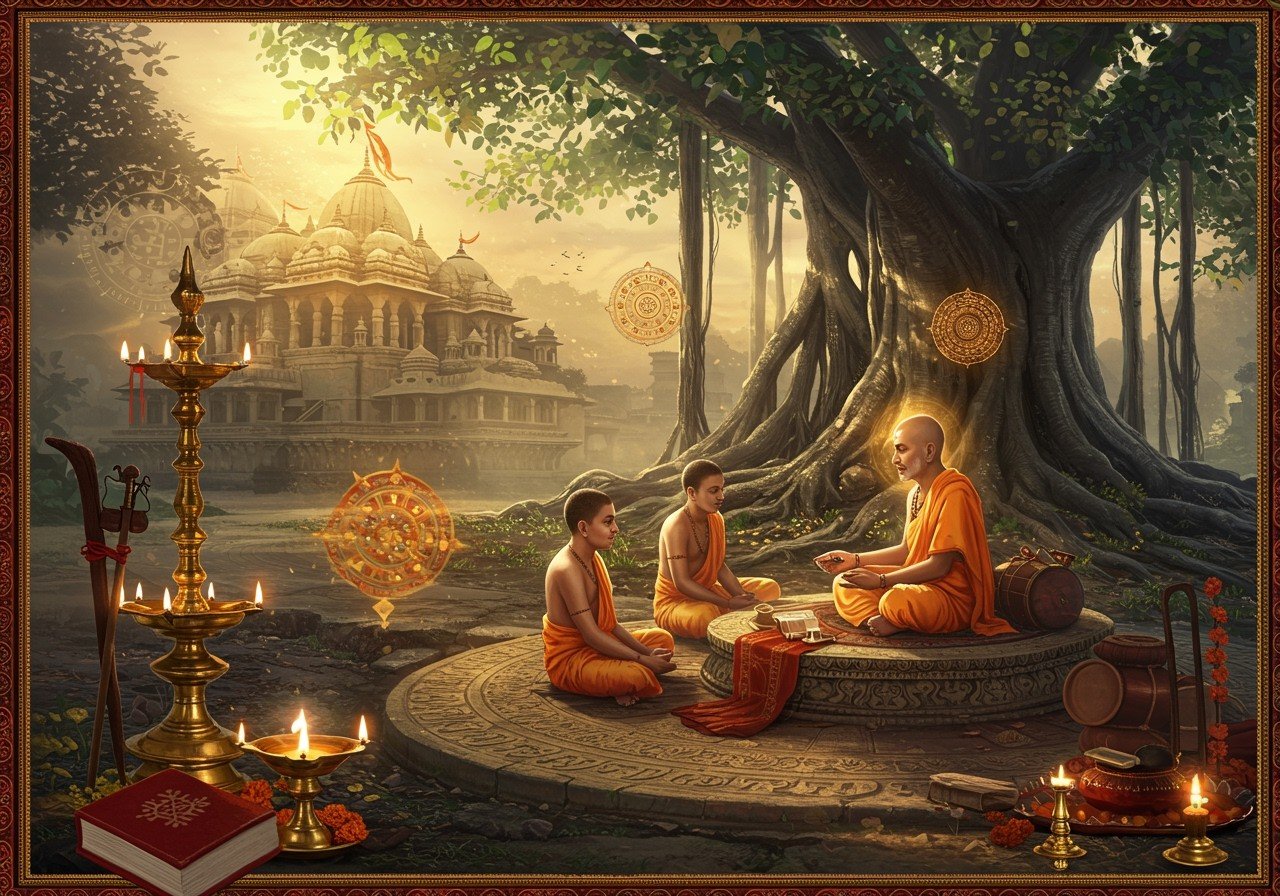
The Vedas, ancient Sanskrit scriptures originating from India, hold immense significance as the foundation of Hindu philosophy, rituals, and spirituality. Composed between approximately 1500 and 500 BCE during the Vedic Age, these sacred texts were initially transmitted orally, meticulously preserved through memorization and exact pronunciation. Later, they were committed to writing, ensuring their enduring presence throughout history. The Vedas encompass a rich collection of hymns, mythological accounts, poems, prayers, and formulas, playing a crucial role in shaping early Indian civilization and continuing to inspire spiritual practices today.
Origins of the Vedas
The Vedas emerged during the Vedic period (1500-500 BCE), a transformative era marked by the transition from nomadic to settled life in India. This period witnessed the rise of early Indian civilization, and the Indo-Aryans played a vital role in the creation of these sacred texts. Composed in Vedic Sanskrit, a language specifically chosen to facilitate oral transmission, the Vedas were carefully crafted by sages and key figures who are revered for their wisdom and spiritual insight. For a deeper dive into the Vedic age and related topics, explore these resources: Hinduism: A Complete History and Origin and Hinduism: A Concise History and Exploration of Its Origins.
Preservation Through Oral Tradition (Shruti)
For centuries, the Vedas were preserved through the meticulous practice of oral transmission, known as “Shruti,” meaning “that which is heard.” This method was considered vital for maintaining the purity and integrity of the texts. Gurukuls, traditional schools of learning, played a central role in teaching and memorizing the Vedas. Specialized techniques like “Padapatha” (word-by-word recitation) and “Krama” (sequential recitation) ensured accuracy and prevented any alterations. The concept of “Parampara” (lineage) was essential, with knowledge being carefully passed down from teacher to student across generations. Vedic rituals and ceremonies further reinforced memorization and transmission, ensuring the continuity of these sacred teachings. Delve deeper into Vedic wisdom with these insightful articles: Vedas: Ancient Wisdom for Modern Life – Practical Applications and Hinduism: A Celebration of Diversity and Tradition.
Transition to Written Form
With the advent of writing systems and the need for wider dissemination, the Vedas eventually transitioned from oral tradition to written form. Early Vedic manuscripts were carefully crafted on durable materials like palm leaves and birch bark. Scribes and scholars dedicated themselves to copying, preserving, and adding insightful commentaries to the texts. Prominent institutions like the Bhandarkar Oriental Research Institute and the Asiatic Society house significant collections of these invaluable manuscripts. In modern times, printing technology and digital archives have revolutionized the preservation and accessibility of Vedic texts, ensuring their continued availability for study and research.
Challenges and Triumphs in Preservation
The preservation of the Vedas has faced numerous challenges throughout history. Natural degradation of materials like palm leaves posed a constant threat, and invasions, political upheavals, and cultural shifts also endangered the survival of these sacred texts. However, the unwavering dedication of scholars and institutions has led to remarkable efforts in restoring and preserving damaged manuscripts. Modern technology, including digital archives, now plays a crucial role in safeguarding Vedic heritage for future generations. Ongoing scholarly research and educational initiatives are essential for maintaining the integrity and understanding of the Vedas. Explore the rich tapestry of Hindu traditions and rituals through these articles: Hindu Rituals: A Guide to Coping with Grief and Loss and Hinduism’s Global Reach: A Look at Its Diverse Traditions.
The Enduring Significance of the Vedas
The Vedas continue to hold profound cultural and ritual significance in contemporary Indian society. They influence daily practices, ceremonies, and festivals within Hindu traditions, providing a framework for spiritual understanding and ethical conduct. Specific rituals derived from Vedic texts, such as “Yajnas” (sacrificial rituals) and “Samskaras” (life-cycle ceremonies), remain integral parts of Hindu religious life. The Vedas offer guidance on ethical principles and are used in modern spiritual practices like meditation and yoga. Preserving Vedic knowledge is paramount for future generations, and various organizations are actively working towards this goal. Enhance your understanding of Hindu spiritual practices with these resources: Yoga & Ayurveda: A Holistic Wellbeing Approach and Mantra Chanting: Sound, Vibration & Healing Power.
Poojn.in: Supporting the Preservation of Vedic Traditions
Poojn.in plays a vital role in supporting the preservation of Vedic traditions by offering a wide selection of authentic products essential for Vedic rituals and practices. Recognizing the importance of using appropriate materials for these sacred ceremonies, Poojn.in provides devotees with access to high-quality items such as pure copper and brass utensils, traditional puja thalis, sacred threads (janeu), genuine wooden items, pure ghee, and authentic sandalwood products. These offerings ensure that individuals can perform rituals according to traditional guidelines, contributing to the continuation of these ancient practices. Poojn.in’s commitment to providing authentic and reliable products empowers individuals to maintain the integrity of Vedic traditions in their homes and communities. Explore our collection of ritual items, including camphor and sandalwood, to enhance your Vedic practices.


